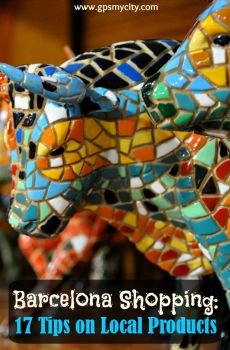Casa de l'Ardiaca (Archdeacon's House), Barcelona
The Archdeacon's House is a former 12th-century Romanesque structure converted between 1479 and 1514 into a palace. Notable for its "Roman style" portal, the building merges medieval Gothic architecture with Renaissance elements. Over the years, significant modifications have included a new facade and a courtyard added in the 16th century, driven by various ecclesiastical residents seeking to expand or beautify their abode.
In 1895, the house accommodated the headquarters of the Bar Association of Barcelona, which commissioned prominent Catalan architect Lluís Domènech to renovate it. In the early 20th century, the property endured structural damages and ownership transitions until it was sold to the Barcelona City Council. Following this, significant restoration and adaptation work was carried out to house the Historical Archive of Barcelona, culminating in the building's declaration as a historical-artistic monument in 1924.
In the mid-20th century, the structure saw further modifications focused on enhancing the visibility of the adjacent Romanesque chapel of Santa Eulàlia and integrating Roman architectural remnants, such as the Roman wall on the ground floor and part of the Collserola aqueduct. A closer look at the Montjuïc sandstone making up the building reveals intricately carved and beveled blocks from other structures. This is a testament to the Romans' hurried fortification of the site in the face of the onslaught from the north by the Visigoths which marked the end of the 200-year-long period of Roman hegemony in the region.
Despite its location in one of the busiest tourist areas of Barcelona, entry to the building is free. The inner courtyard exudes a surprising tranquility, making it one of the most evocative spaces in the city. The courtyard showcases exquisite tile work, and at its center, you can see a tall, graceful palm tree towering above a flower-adorned fountain. This fountain holds a curious tradition: on Corpus Christi Day in June, it hosts an impressive spectacle known as "the dancing egg," featuring eggs bobbing atop jets of water.
Tip:
At the front entrance of the House, look out for what may well be the most attractive letterbox you've ever seen! Crafted from marble and created in 1895 by Lluís Domènech for the Bar Association of Barcelona, it holds a symbolic meaning. Doves represent the lofty flight towards justice, while turtles symbolize the slow pace of administrative procedures.
In 1895, the house accommodated the headquarters of the Bar Association of Barcelona, which commissioned prominent Catalan architect Lluís Domènech to renovate it. In the early 20th century, the property endured structural damages and ownership transitions until it was sold to the Barcelona City Council. Following this, significant restoration and adaptation work was carried out to house the Historical Archive of Barcelona, culminating in the building's declaration as a historical-artistic monument in 1924.
In the mid-20th century, the structure saw further modifications focused on enhancing the visibility of the adjacent Romanesque chapel of Santa Eulàlia and integrating Roman architectural remnants, such as the Roman wall on the ground floor and part of the Collserola aqueduct. A closer look at the Montjuïc sandstone making up the building reveals intricately carved and beveled blocks from other structures. This is a testament to the Romans' hurried fortification of the site in the face of the onslaught from the north by the Visigoths which marked the end of the 200-year-long period of Roman hegemony in the region.
Despite its location in one of the busiest tourist areas of Barcelona, entry to the building is free. The inner courtyard exudes a surprising tranquility, making it one of the most evocative spaces in the city. The courtyard showcases exquisite tile work, and at its center, you can see a tall, graceful palm tree towering above a flower-adorned fountain. This fountain holds a curious tradition: on Corpus Christi Day in June, it hosts an impressive spectacle known as "the dancing egg," featuring eggs bobbing atop jets of water.
Tip:
At the front entrance of the House, look out for what may well be the most attractive letterbox you've ever seen! Crafted from marble and created in 1895 by Lluís Domènech for the Bar Association of Barcelona, it holds a symbolic meaning. Doves represent the lofty flight towards justice, while turtles symbolize the slow pace of administrative procedures.
Want to visit this sight? Check out these Self-Guided Walking Tours in Barcelona. Alternatively, you can download the mobile app "GPSmyCity: Walks in 1K+ Cities" from Apple App Store or Google Play Store. The app turns your mobile device to a personal tour guide and it works offline, so no data plan is needed when traveling abroad.
Casa de l'Ardiaca (Archdeacon's House) on Map
Sight Name: Casa de l'Ardiaca (Archdeacon's House)
Sight Location: Barcelona, Spain (See walking tours in Barcelona)
Sight Type: Attraction/Landmark
Guide(s) Containing This Sight:
Sight Location: Barcelona, Spain (See walking tours in Barcelona)
Sight Type: Attraction/Landmark
Guide(s) Containing This Sight:
Walking Tours in Barcelona, Spain
Create Your Own Walk in Barcelona
Creating your own self-guided walk in Barcelona is easy and fun. Choose the city attractions that you want to see and a walk route map will be created just for you. You can even set your hotel as the start point of the walk.
Antoni Gaudí's Masterpieces Walking Tour
Antoni Gaudi, a seminal figure in the Catalan Modernism movement, is one of the top architects of the 20th century. The unique technique and use of natural forms in his works stand out from the pack and have left an indelible mark on the face of Barcelona.
Our journey through Gaudi's Barcelona begins at the Güell Palace, by far the most budget-friendly of his projects. Located near La... view more
Tour Duration: 2 Hour(s)
Travel Distance: 4.6 Km or 2.9 Miles
Our journey through Gaudi's Barcelona begins at the Güell Palace, by far the most budget-friendly of his projects. Located near La... view more
Tour Duration: 2 Hour(s)
Travel Distance: 4.6 Km or 2.9 Miles
Barcelona Introduction Walking Tour
According to legend, Barcelona was founded by the mythological Greek hero Hercules on one of his expeditions, when a storm hit his boats. The first eight boats managed to escape without damage, but the ninth was lost at sea. Hercules found his lost friends some days later on the coast, all safe and sound. The boat's crew, taken by the beauty of the coastal landscape, decided to stay. On that... view more
Tour Duration: 3 Hour(s)
Travel Distance: 5.7 Km or 3.5 Miles
Tour Duration: 3 Hour(s)
Travel Distance: 5.7 Km or 3.5 Miles
La Rambla Walking Tour
One of the main streets in central Barcelona, La Rambla is popular with tourists and locals alike. Connecting the city’s old port with Plaça de Catalunya, it is filled with cultural and historic landmarks, as well as many terraces, restaurants, shops and street artists. Spanish poet, Federico García Lorca once said it was “the only street in the world which I wish never ended.”
Start... view more
Tour Duration: 1 Hour(s)
Travel Distance: 2.3 Km or 1.4 Miles
Start... view more
Tour Duration: 1 Hour(s)
Travel Distance: 2.3 Km or 1.4 Miles
Barcelona Food Tasting Walking Tour
No one should visit Barcelona without making an attempt to get acquainted with some of Spain’s best food – Catalan food. An abundance of fresh fish and superb meat, a plethora of great vegetables, plus local inventiveness, have produced a very diverse, distinctive and delicious cuisine, including the famous (and trendy) tapas dishes.
Follow this self-guided walk to treat your taste buds in... view more
Tour Duration: 2 Hour(s)
Travel Distance: 2.9 Km or 1.8 Miles
Follow this self-guided walk to treat your taste buds in... view more
Tour Duration: 2 Hour(s)
Travel Distance: 2.9 Km or 1.8 Miles
Montjuic Walking Tour
Montjuic is a hill in Barcelona which offers a variety of great attractions of historic, cultural, and architectural value. Here, you can watch a spectacular water show at the Magic Fountain of Montjuic, visit the place where matadors faced the bulls in the past, and explore the ancient Montjuic Castle with its breathtaking views.
A convenient start point, Placa d'Espanya is the second... view more
Tour Duration: 3 Hour(s)
Travel Distance: 5.0 Km or 3.1 Miles
A convenient start point, Placa d'Espanya is the second... view more
Tour Duration: 3 Hour(s)
Travel Distance: 5.0 Km or 3.1 Miles
La Ribera Walking Tour
La Ribera is a culturally rich, historic area of Barcelona’s Old Town; somewhat less touristy than the Gothic Quarter (which one should really visit as well) and quite unspoiled, authentic and pretty. Centuries ago, it was a very well-to-do neighborhood inhabited by aristocrats, merchants, wealthy sailors, and Jewish money-lenders. Today, it is regarded as the Soho of Barcelona – a popular... view more
Tour Duration: 2 Hour(s)
Travel Distance: 2.8 Km or 1.7 Miles
Tour Duration: 2 Hour(s)
Travel Distance: 2.8 Km or 1.7 Miles
Useful Travel Guides for Planning Your Trip
Barcelona Souvenir Shopping: 17 Uniquely Spanish Things to Buy
Spain, in general, and Barcelona, in particular, are a treasure trove of all things exciting. Set your foot in Barcelona and you'll be spoiled for the choice of things worth trying and taking home. Before your head starts spinning, check this guide out to put yourself in the right...
Top 10 Spanish Foods and Drinks to Try in Barcelona
In the countries like Spain, food is a national heritage and cultural attraction in its own right. The latter is even more true of Catalonia in general and Barcelona in particular. Presented here are the 10 staples of Catalan food tradition, missing which would be a gastronomical...











